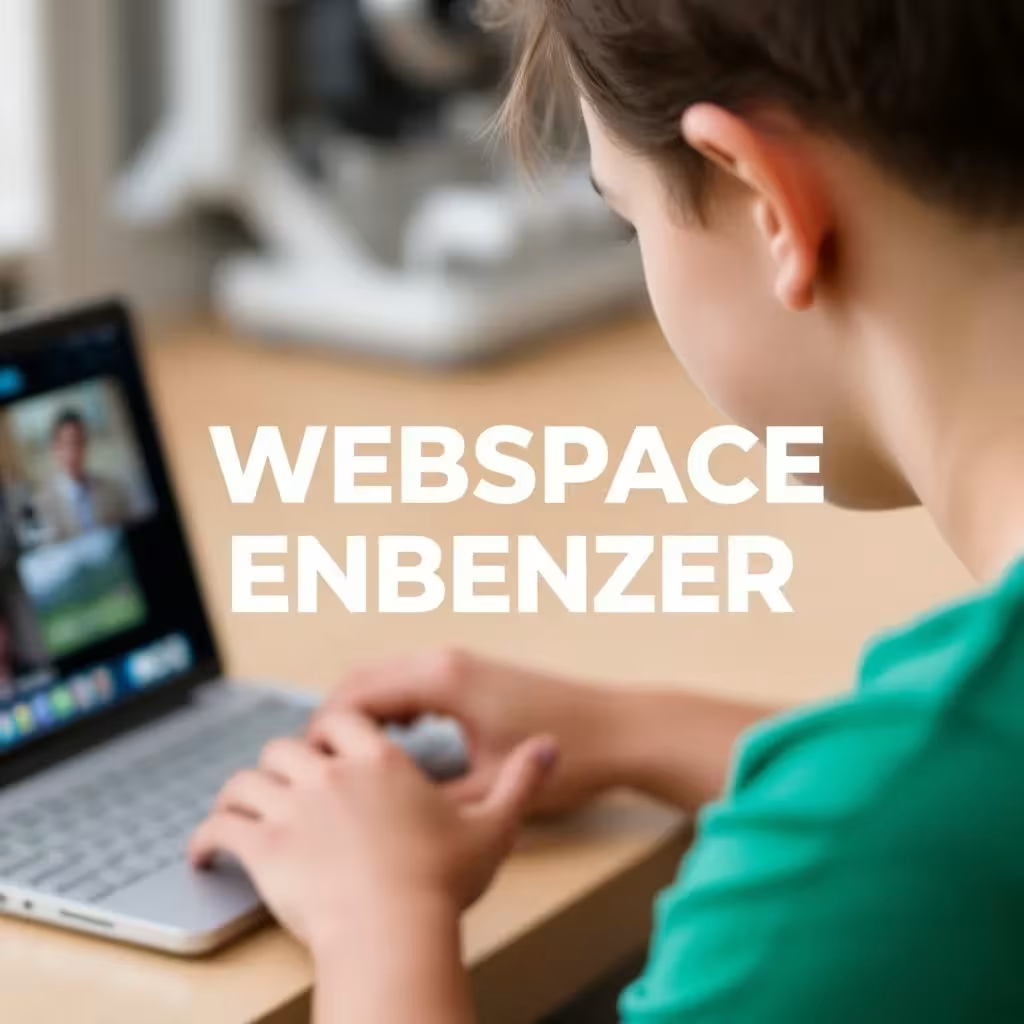Introduction to Headless WordPress
WordPress has proven itself as the leading content management system (CMS) for years. With its user-friendly interface and a wide range of plugins and themes, it is the preferred choice for millions of websites worldwide. However, with the increasing complexity of digital presences and the need for more flexible solutions, the concept of headless WordPress is becoming more and more important. This innovative approach separates the backend, where content is managed, from the frontend, which is responsible for displaying that content. This opens up new possibilities, but also brings with it some challenges.
The advantages of headless WordPress
Increased flexibility in front-end design
A key advantage of headless WordPress is the increased flexibility when designing the front end. Developers are no longer bound by the specifications of traditional WordPress themes, but can use modern frameworks such as React, Vue.js or Angular. This enables the creation of highly individualized and powerful user interfaces that are precisely tailored to the needs of the project. With this flexibility, unique user experiences can be created that stand out from standardized designs.
Improved performance and loading times
The separation of backend and frontend often leads to improved website performance. As the frontend works independently of the WordPress core, pages can be loaded and displayed faster. This has a positive effect on the user experience and can also benefit search engine optimization (SEO), as loading speed is an important ranking factor. Fast loading times reduce the bounce rate and increase the time visitors spend on the website, which in turn can increase the conversion rate.
Omnichannel content and extended reach
Another plus point is the ability to distribute content across different channels. With an API-based structure, the content managed in the WordPress backend can be played out not only on websites, but also in mobile apps, on IoT devices or in other digital formats. This makes headless WordPress an attractive option for companies pursuing an omnichannel strategy. Content can be delivered consistently across different platforms, strengthening brand presence and ensuring a seamless user experience.
Scalability and resource efficiency
Scalability is another advantage of the headless approach. As the frontend and backend work independently of each other, they can be scaled separately if required. This enables more efficient use of resources and makes it easier to handle traffic peaks. Companies can adapt their infrastructure in a targeted manner to meet increasing requirements without having to overhaul the entire system.
More modern development processes
For developers, headless WordPress offers the freedom to work with the latest front-end technologies. They can use their favorite tools and frameworks without having to consider the limitations of the traditional WordPress ecosystem. This encourages innovation and enables the implementation of complex, interactive web applications. In addition, developers can use APIs and microservices to create a more modular and maintainable architecture.
Increased security
The increased security is another plus point. As the front end is separate from the back end, the attack surface for potential hackers is reduced. Even if the front end is compromised, the back end with the sensitive data remains protected. This separation minimizes the risk of data leaks and attacks such as SQL injections, as direct access to the backend is made more difficult.
Challenges in the implementation of headless WordPress
Increased complexity and technical expertise
Despite these advantages, headless WordPress also comes with some challenges. One of these is the increased complexity of setup and maintenance. Unlike a traditional WordPress installation, a headless setup requires in-depth technical know-how. This can be a hurdle for smaller companies or projects with limited resources. Implementation often requires specialized developers who are familiar with both WordPress and modern front-end technologies.
Higher development costs
Development costs can be higher for a headless project. The need to develop and maintain both the backend and a customized frontend can increase the time and resources required. This should be taken into account during project planning. Companies may need to invest in additional developer resources or bring in external specialists, which can increase the overall cost of the project.
Loss of WordPress functions
Another disadvantage is the possible loss of some WordPress functions. Many popular plugins and themes are not readily compatible with a headless setup. This can lead to certain functionalities having to be redeveloped or alternative solutions having to be found. In particular, functions that rely heavily on the traditional WordPress frontend may need to be completely reimplemented.
More complex SEO management
Managing SEO can become more complex in a headless environment. Traditional WordPress SEO plugins often don't work as they should, so alternative strategies need to be developed to optimize for search engine friendliness. This requires a deeper understanding of SEO practices and possibly additional tools. Implementing server-side rendering (SSR) or static site generating (SSG) may be necessary to take full advantage of the SEO benefits of headless WordPress.
Unfamiliar workflow for content creators
For content creators and editors, working in a headless system can be unfamiliar at first. The lack of a direct preview of changes in the frontend can affect workflow and may require adjustments to work processes. It is important to provide appropriate training and resources to ease the transition and ensure that the team can work efficiently with the new system.
Implementation of dynamic elements
The implementation of dynamic elements such as comment systems or forms can be more complex in a headless environment. Custom solutions often have to be developed for this, which means additional development effort. Alternative approaches, such as the integration of third-party services or the use of APIs, can help here, but require careful planning and implementation.
Use cases for headless WordPress
Headless WordPress is particularly suitable for certain use cases where the advantages of separating the backend and frontend are fully utilized.
Large corporate websites and portals
For large companies with complex web applications or portals, headless WordPress offers the necessary scalability and flexibility. The ability to use different front-end technologies and distribute content across different channels is particularly valuable here.
E-commerce platforms
E-commerce businesses benefit from improved performance and the ability to create unique user experiences. Headless WordPress can be seamlessly integrated with e-commerce platforms such as WooCommerce to provide a powerful and flexible online store solution.
Mobile applications and progressive web apps (PWAs)
The API-based structure of Headless WordPress is ideal for the development of mobile applications and Progressive Web Apps (PWAs). Content can be shared efficiently between different platforms, which facilitates the development of consistent and powerful apps.
Content-heavy websites and blogs
Websites that need to manage large amounts of content benefit from improved performance and the ability to scale easily. Headless WordPress enables efficient content management and fast delivery of content to users.
Strategies for the successful implementation of headless WordPress
To overcome the challenges and take full advantage of headless WordPress, various strategies are helpful.
Careful planning and resource management
Careful planning is essential for the successful implementation of a headless WordPress project. It should be carefully weighed up whether the advantages outweigh the disadvantages for the specific project. A realistic assessment of the available resources and technical expertise in the team is also important. Project timelines and budgets should be adjusted accordingly to take into account the increased development effort.
Use of headless CMS platforms and frameworks
Using headless CMS platforms designed specifically for this purpose can simplify the setup process. Ready-made starter kits and frameworks can also speed up development. Platforms such as Strapi or Contentful offer comprehensive APIs and tools that facilitate integration with headless WordPress.
SEO optimization with modern techniques
There are now specialized tools and techniques for SEO optimization in a headless environment. The implementation of server-side rendering (SSR) or static site generating (SSG) can help to improve search engine friendliness. Tools such as Next.js or Gatsby.js offer integrated SEO optimizations and simplify the implementation of meta tags, structured data and other SEO-relevant elements.
Training and further education of the team
Training the team in the relevant technologies and working methods is an important step in facilitating the transition to headless WordPress. This applies to developers as well as content creators and other stakeholders. Targeted training and workshops can ensure that everyone involved can use the new processes and tools effectively.
Integration of third-party services
The integration of third-party services can help to easily implement functionalities such as commenting systems, forms or real-time analytics. Services such as Disqus for comments or Formspree for forms offer simple API-based solutions that can be seamlessly integrated into a headless setup.
Future prospects and conclusion
In conclusion, headless WordPress is a powerful option for modern web projects. It offers flexibility, scalability and the ability to create innovative digital experiences. Especially in an age where users expect diverse and frictionless interactions, the headless approach can make all the difference. At the same time, it also requires a higher level of technical understanding and careful planning. For companies and organizations willing to take on these challenges, headless WordPress can pave the way to a future-proof and powerful digital presence.
The continuous development of front-end technologies and APIs will further increase the relevance of headless architectures. In a rapidly changing digital landscape, headless WordPress offers the flexibility needed to adapt to new requirements and remain competitive. Companies that embrace this trend early on can gain a significant competitive advantage and manage and present their digital content effectively and efficiently.



